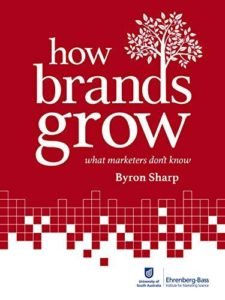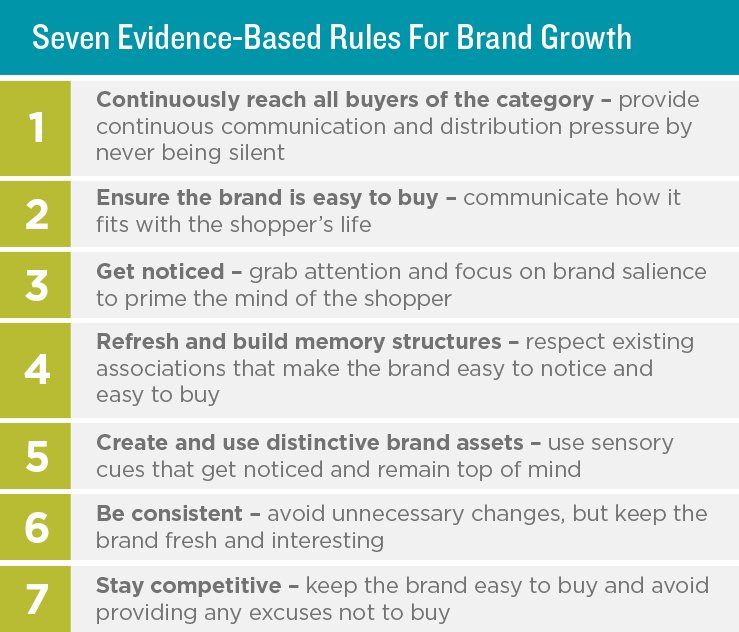 The first part of How Brands Grow, What Marketers Don’t Know was a business bestseller by Byron Sharp that took the marketing world by storm a decade ago. Sharp and his colleagues at the Ehrenberg-Bass Institute used evidence-based research to dispute many of the long-standing marketing rules that nobody ever questioned.
The first part of How Brands Grow, What Marketers Don’t Know was a business bestseller by Byron Sharp that took the marketing world by storm a decade ago. Sharp and his colleagues at the Ehrenberg-Bass Institute used evidence-based research to dispute many of the long-standing marketing rules that nobody ever questioned.
 For those that bought into the message like us at Middlegame, the book became a user manual for explaining how to build brands based on what works in the scientific practice of marketing instead of how things are meant to work in theory. Several of the concepts presented in the “seven evidenced based rules” that the book outlines have come up in recent client conversations. Initially, the clients felt this was not really something aligned with the work Middlegame does to help unlock growth opportunities through renovating the assortment, merchandising, and pricing strategy.
For those that bought into the message like us at Middlegame, the book became a user manual for explaining how to build brands based on what works in the scientific practice of marketing instead of how things are meant to work in theory. Several of the concepts presented in the “seven evidenced based rules” that the book outlines have come up in recent client conversations. Initially, the clients felt this was not really something aligned with the work Middlegame does to help unlock growth opportunities through renovating the assortment, merchandising, and pricing strategy.
We strongly disagree, which is the genesis of this blog entry. The seven evidence-based rules for brand growth are highly related to how we try to get marketers to think with our shopper response analytics. Many of the ideas in How Brands Grow are central to the Competitive Interaction Analysis (CIA)® platform, but finding, building, and maintaining true “market-based assets” is right in our wheelhouse. This core concept is all about maximizing distribution — availability both in the mind and at the shelf. Sharp expands on this across seven dimensions:

These supply the connectivity marketers need to the real psychology of shopping. The evidence-based research suggests that shoppers make most purchase decisions the emotional part of our brains. This means that brands with the highest propensity for growth are those that focus on simple and consistent brand assets that are easy to remember and trigger instinctual responses when made available. For Middlegame, this is far from controversial. However, Byron Sharp touches a nerve when he follows this up by questioning all of the marketing effort directed at the rational part of the brain.
He argues that continuous investment in segmentation, differentiation and brand personality studies explain that the rational or “neo-mammalian” decision-making is a big waste of time. All this positioning work is meant to show where the brand should occupy in the “mind of the shopper” based on a select number of functional benefits that is most valuable to shoppers and least likely to be owned by competitor brands. However, if the emotional part of the brain drives purchase decisions, then the brand differentiation, let alone the functional benefits, are mostly meaningless.
This obviously caused quite a bit of commotion in the industry, but How Brands Grow, What Marketers Don’t Know is full of examples from well-documented research to support these claims. I guess, for the most part, this blog entry is really a setup and needs a little more detail. When we return from the break, I will dig a little more into how we operationalize a lot of these concepts.
Athbhliain faoi mhaise daoibh / “Ah-vlee-on fwee wash-ah gwitch” / … Happy New Year, everyone!
Middlegame is the only ROMI consultancy of its kind that offers a holistic view of the implications of resource allocation and investment in the marketplace. Our approach to scenario-planning differs from other marketing analytics providers by addressing the anticipated outcome for every SKU (your portfolio and your competitors’) in every channel. Similar to the pieces in chess, each stakeholder can now evaluate the trade-offs of potential choices and collectively apply them to create win-win results.
